Indica Strains: Do They Cause Sleepiness?
Unveiling the velvety curtain of night, indica strains beckon with promises of deep relaxation and tranquility. Originating from the Indian subcontinent and making their journey to the United States in the 1970s, these botanical wonders have a distinctive growth pattern—short and wide—a botanical silhouette attuned to their storied ability to support a restful state. But the question at night's edge whispers, does indica make you sleepy?
The robust body high that ensues from indulging in indica is not just a mere tale of tranquility but a powerful ally against the day's burdensome echoes. It delivers profound relaxation, appeases the residual pain of exercise, and cradles you into the arms of Morpheus. With a notorious reputation for causing “couch-lock,” indica's potential sleep benefits make it a likely companion for those seeking respite in slumber's embrace.
Key Takeaways
- Indica strains' growth pattern is a visual cue: short, wide, and seemingly designed for relaxation.
- The rich body high and indica sleep benefits stem from their origins and have been celebrated since the 1970s.
- Grasping the essence of ‘couch-lock,' indica may be a nocturnal confidant for those seeking solace in rest.
- Support for relieving temporary exercise-induced pain is among indica's restorative capabilities.
- Understanding the effects of indica is essential for those exploring its use for better sleep quality.
Understanding Indica Cannabis Strains
Reflecting the nuanced tapestry of cannabis botany, indica strains are a testament to plant geneticists' mastery over nature's alchemy. These cultivars exude physiological hallmarks that differentiate them from their sativa counterparts, offering a gateway to understanding the complexities in their effects and applications.
The Origins and Characteristics of Indica
Resembling the storied landscapes from which they hail, indica strains boast a distinct “stubby” appearance, burgeoning wide and compact in contrast to the loftier sativa variety. Rooted deeply in the Indian subcontinent, the exchange of indica genetics with Western cultivation practices in the 1970s has woven a rich history into their dense foliage. Connoisseurs and patients alike seek the solace of indica's embrace, a testament to its enduring appeal rooted in a rich botanical lineage.
Indica vs. Sativa: Key Differences in Effects
Foremost in the arena of cannabis effects is the stark contrast between indica's sedative blanket and sativa's invigorating veil. While sativas beckon with their promise of cerebral clarity and energy, it is the indica that cradles the weary with its sedative properties. The swath of solace carved by indica's effects finds its origins in the plant's unique cannabinoid profile—a tapestry of THC, CBD, and CBN—intertwined with a complex bouquet of terpenes. Together, these chemical symphonies orchestrate the effects of indica strains, serenading the senses into tranquility.
As modern pharmacognosy unravels the mysteries of indica's effects, the relationship between its genetic fabric and the sought-after sedative properties continues to captivate those on a quest for nocturnal repose. Through the analysis of countless strains, a revelation unfolds—each harbors a unique combination promised to the touchstones of relaxation and relief.
The Science Behind Indica’s Sedative Effects
The tranquil embrace of an indica strain does more than just soothe the mind; it ushers in a state of serenity that lulls the body to rest. A constellation of chemical compounds—terpenes—stand at the helm of this phenomenon. Let's delve into the botanical chemistry that positions indica as the strain of choice for those seeking repose in the arms of sleep.
Role of Terpenes in Indica’s Relaxing Properties
Terpenes, the fragrant oils secreted in the same glands that produce cannabinoids like THC and CBD, are powerhouse contributors to the indica strain effects on sleep. They do more than offer a spectrum of scents ranging from earthy to fruity—terpenes modulate the cannabis experience and contribute significantly to the therapeutic outcomes. Present in abundance within indica strains, these compounds are the behind-the-scenes directors of the strain's tranquilizing narrative.
Let's explore the primary terpenes that signal the body it's time to unwind:
- Myrcene: Traditionally heralded for its muscle relaxant and sedative qualities, myrcene is frequently encountered in indica strains. It's known for its earthy, musky aroma—a scent that heralds the onset of calm.
- Linalool: Bearing a floral and spicy aroma, linalool echoes the calming essence of lavender and is esteemed for its ability to ease anxiety and promote relaxation.
- Terpinolene: With a complex bouquet of piney, floral, herbal, and occasionally citrusy nuances, terpinolene contributes to the soothing symphony that catalyzes sleep.
Why Myrcene Contributes to Sleepiness
Among the terpene ensemble, myrcene stands out as the dominant note in the peaceful lullaby that is indica's effects on sleep. Scientific study and anecdotal evidence vouch for myrcene's capacity to heighten THC's impact by making it easier for this famed cannabinoid to cross the blood-brain barrier. This partnership between myrcene and THC paves the way for a deeper, more profound sleep—an alliance that explains why strains high in both compounds are sought after by those combatting restlessness.
The table below outlines the relationships connecting these terpenes to sleep and relaxation:
| Terpene | Aroma | Effects on Sleep | Common in Indica Strains |
|---|---|---|---|
| Myrcene | Earthy, musky | Sleep-inducing, muscle relaxant | Yes |
| Linalool | Floral, spicy | Anxiety relief, relaxation | Often present |
| Terpinolene | Piney, herbal | Soothing, sedative | Varies |
In sum, the harmonious blend of myrcene, linalool, and terpinolene, inherent in many indica strains, sets the stage for a liaise with slumber, underscoring their pivotal role in facilitating a tranquil transition to sleep.
Does Indica Make You Sleepy: The Debate Explored
The lingering question, does indica make you sleepy, has sparked much debate among both seasoned cannabis enthusiasts and the newly initiated. While indica's restful reputation suggests a one-size-fits-all solution for those battling sleepless nights, the reality is steeped in more complexity.
Variations among indica strains are not only botanical but biochemical, influencing their effectiveness in summoning sleep. For many, the indica sleepy feeling is a gentle nudge toward dreamland, while others may find different effects depending on the specific strain's chemical makeup.
Peering into the potential of indica strains to combat insomnia, the focus turns to the intertwining roles of terpenes such as myrcene and cannabinoids like THC and CBD. Each compound, like a piece in a puzzle, fits together to potentially craft an idyllic setting suited for those who ask, can indica strain help with insomnia?
Myrcene, known for its sedative effects, is a commonly found terpene in indica strains. Yet, its level of presence can differ, with higher concentrations possibly leading to more pronounced drowsiness. THC, on the flip side, is cherished for its psychoactive qualities but may also wield the power to promote sleep, especially in higher dosages. Meanwhile, CBD has been noted for its stress-relieving properties without necessarily invoking sleepiness.
Therefore, the sedation commonly linked to indica strains is not a blanket effect but rather a result of specific and often unique blends of these natural compounds. To understand how these elements work in concert, let's break down their contributions:
Myrcene, with its musky notes, sets the stage for relaxation, potentially enhancing THC's ability to usher in a restful state. THC itself can dial up sedation, especially when it steps into the limelight in higher concentrations. Meanwhile, CBD plays a supportive role, possibly tempering anxiety and stress without necessarily leading to sleep directly.
As research evolves and awareness of personal biochemistry becomes more pronounced, the role of these compounds in inducing sleep continues to be a subject ripe for exploration. Evidence points to a tailored experience influenced by both the strain's cannabinoid and terpene profiles and the individual's unique biology and tolerance. In conclusion, while indica may indeed nudge you towards slumberland, the path it takes is as personalized as a fingerprint.
Terpenes and Their Influence on Sleep
The deep and resounding indica sleepy feeling is not merely the result of its cannabinoid content but also largely influenced by its aromatic compounds known as terpenes. These organic compounds contribute to the scent and flavor of cannabis and significantly impact its therapeutic effects, particularly in the domain of sleep. Indica strains, traditionally cherished for their somnolent effects, often owe their potent sedative qualities to a unique terpene profile that naturally facilitates relaxation and drowsiness.
Analyzing the Most Common Sedative Terpenes
Among the over 100 different terpenes found in the cannabis plant, certain ones stand out for their pronounced influence on sleep. Myrcene, perhaps the most prevalent terpene in indica strains, is renowned for its sedative and muscle relaxant effects. The calming linalool, with its soothing lavender-like scent, also tops the list of terpenes that foster sleep. Additionally, terpinolene offers a more nuanced range of fragrances while contributing to the overall soporific experience. These compounds exemplify the terpene influence on sleep, setting the stage for a deeper dive into their specific sleep-inducing attributes.
Terpene Profiles of Popular Indica Strains
When exploring strains like Northern Lights and Zkittlez, the terpene profiles present offer a fascinating peek into the natural components that make these strains ideal for those seeking a peaceful night's rest. Northern Lights, a pure indica strain, is lauded for its ability to relax both mind and body, largely due to its terpene composition. For those dealing with stress, insomnia, or pain, the terpenes of Zkittlez, with its candy-flavored overtones, provide a gentle, calming effect while uplifting the spirit.
| Indica Strain | Dominant Terpenes | Sleep-Inducing Potential |
|---|---|---|
| Northern Lights | Terpinolene, Caryophyllene, Limonene | High |
| Zkittlez | Beta Caryophyllene, Humulene, Linalool | Moderate to High |
| The Remedy | Limonene, Beta-Caryophyllene, Myrcene | Moderate |
| Sweet & Sour Widow | Limonene, Beta-Caryophyllene, Myrcene | Moderate |
| Granddaddy Purp | Humulene, Alpha-Pinene, Caryophyllene | Moderate to High |
These carefully curated terpene profiles go beyond offering a pleasant aroma. They play a pivotal role in enhancing the quintessential indica sleepy feeling. Indeed, as the research on these aromatic treasures expands, their capacity to influence sleep is undeniable, with each terpene contributing in its unique way. They beckon the willing into a night of serene slumber, underpinning the therapeutic charm of these beloved indica strains.
Indica’s Cannabinoids: CBN and THC
As we delve into the soothing realms of Indica strains, two pivotal cannabinoids emerge as keystones in the edifice of relaxation: CBN (Cannabinol) and THC (Tetrahydrocannabinol). These compounds are the alchemists behind the curtain, transmuting restlessness into serenity and weaving the sedative tapestry of these iconic strains.
How CBN Elevates Indica’s Sleep Inducing Qualities
CBN, a lesser-known cannabinoid when compared to its illustrious cousin THC, nevertheless plays a significant role in the sleep-inducing effects often associated with Indica strains. The presence of CBN in certain Indica strains has been acknowledged for inducing a strong sense of tiredness. Without the intense psychoactivity that THC can sometimes represent, CBN stands out for its tranquil influence, often reiterated in queries like “does smoking indica make you tired”? The answer lies in CBN's increasingly recognized potential to promote a restful night's sleep.
Consider the Ace of Spades variety, an Indica strain with remarkable levels of CBN. It serves as a testament to the compound's efficacy in aiding rest. The cannabinoid's natural propensity for sedation, observed in the quietude it bestows, is increasingly making it a focus in cannabis research and product development.
Understanding THC’s Role in Sedation
THC, the most renowned of cannabis's chemical constituents, is celebrated for its psychoactive effects that transform perception and elevate experience. Yet, it also possesses powerful sedative properties, particularly in the deeper shades of the Indica spectrum, where it's found in higher percentages. THC's ability to induce sleep is complex and depends upon the dose. In moderate to high levels, it acts as a potent sedative, whereas lower concentrations have been known to stimulate the senses.
Indica strains high in both THC and CBN – enriched with sleepy terpenes like myrcene – are often the preferred choice for those seeking the ultimate in relaxation and sedation. These cannabinoids, in concert with particular terpenes, form an entourage effect, which can be the key to unlocking undisturbed slumber.
The interplay of CBN and THC ignites a fascination amongst both researchers and users alike who are eager to understand and harness the calming effects attributed to Indica strains. For those seeking the embrace of sleep, finding the sweet spot in terms of the right strain boasting the ideal cannabinoid profile becomes an enlightening journey into the heart of cannabis's therapeutic potential.
Indica for Sleep: Practical Strain Selection
Discovering the perfect indica strain to promote restful sleep is akin to selecting a fine wine for a gourmet meal; the details matter. The allure of a peaceful, uninterrupted night's rest is powerfully linked to the particular strain of indica chosen, with each bearing its own unique combination of compounds that contribute to the heralded indica sleepy feeling.
Recommended Indica Strains for Better Rest
Exploring the vast landscape of indica strains yields a treasure trove of varieties celebrated for cradling users into lethargy's gentle grasp. Known for their soporific terpene profiles and harmonizing cannabinoid ratios, strains like Northern Lights, Zkittlez, The Remedy, Sweet & Sour Widow, and Granddaddy Purp have gained notoriety as nighttime sanctuaries. Each strain weaves its own sleepy spell, enveloping the restless in a serene sleep-aiding ambiance so coveted by those plagued with insomnia.
The following table provides insight into the sleepy terpene and cannabinoid constellations present in each recommended strain, offering a guide to selecting an indica for sleep that aligns with personal needs for nocturnal tranquility:
| Strain Name | Dominant Terpenes | Key Cannabinoids | Sleep-Inducing Profile |
|---|---|---|---|
| Northern Lights | Terpinolene, Caryophyllene, Myrcene | THC, CBN | Highly sedative, ideal for deep relaxation |
| Zkittlez | Beta-Caryophyllene, Humulene, Linalool | THC, CBD | Sweet tranquility with calming effects |
| The Remedy | Myrcene, Limonene, Beta-Caryophyllene | CBD dominant, Low THC | Mild sedation, stress relief for better sleep |
| Sweet & Sour Widow | Myrcene, Limonene, Beta-Caryophyllene | Balanced THC/CBD ratio | Gentle relaxation, mood enhancement |
| Granddaddy Purp | Myrcene, Humulene, Alpha-Pinene | THC, minor CBN | Soothing, comforting, ideal for easing into sleep |
The quest for a harmonious night's repose can be navigated through the informed selection of an indica strain. Harnessing the sedative power of these specially curated varieties may unlock the doors to Dreamland for those attuned to the nocturnal hymns of indica for sleep.
Indica’s Impact on Temporary Pain and Discomfort
While widely recognized for its indica sleep benefits, the soothing power of indica strains extend beyond their sedative qualities. Often overlooked are the significant roles these strains play in alleviating physical discomfort, revealing the versatility and therapeutic potential of these wonder plants.
Exercise-Induced Pain Relief with Indica Strains
After vigorous physical activities, many find themselves grappling with muscle soreness and stiffness. This is where the exercise-induced pain relief properties of indica strains shine. Their therapeutic profile, rich in cannabinoids and terpenes, has been known to provide meaningful relief from post-exercise aches, enhancing the body's natural recovery process. For those seeking to soothe their tired limbs and foster muscle relaxation after a workout, indica's natural compounds offer a botanical respite that supports healing and recovery.
Headaches and Indica: Relief Potential
Moments of calm can be elusive when under the grip of a tension headache. However, the potential for headache relief is another layer to the therapeutic tapestry of indica strains. Known to ease various types of discomfort, the specific chemical makeup of indica can help mitigate the pressure and pain of headaches. Users have reported moments of tranquility and diminished discomfort upon utilizing indica varieties, suggesting a promising avenue for natural headache management and a layer of comfort for those afflicted.
For those turning to natural solutions in handling physical discomforts, indica strains stand as guardians of relief, offering solace in both stillness and recovery.
Introducing Indica Vapes for Enhanced Sleep
As the quest for a nocturnal embrace tightens, many seekers of serenity are turning to indica vapes for a natural path to the land of Nod. Evoking a profound sense of calm and paving the way for deep rest, vaping has emerged as a popular method to harness the famed indica for sleep properties. The concentrated essence of indicas like the Northern Lights strain and the sweet Zkittlez strain is encapsulated in these vapes, which offer a cleaner, more direct route to relaxation, free from the additives of synthetic oils and chemicals.
Northern Lights: A Sleep-Friendly Strain Profile
Among the illuminated pantheon of sleep aids, the Northern Lights strain shines as a beacon for those adrift on a sea of restlessness. This pure indica variety wraps the senses in a velvety cloak of tranquility, caressing the mind and body into stillness. With a distinctive profile built upon a foundation of Terpinolene, Caryophyllene, and Limonene, it's recognized as an ideal vaping choice for ushering in an era of peaceful slumber.
Explore the Sleep-Inducing Qualities of Zkittlez
Drawing from a palette of natural essences, the Zkittlez strain, bred from Grape Ape and Grapefruit lineage, is like a lullaby in vapor form. Its tropical melody of Beta-Caryophyllene, Humulene, and Linalool weaves an intricate dance of flavors that heartens the spirit while simultaneously descending upon the curtains of consciousness, inviting rest with open arms.
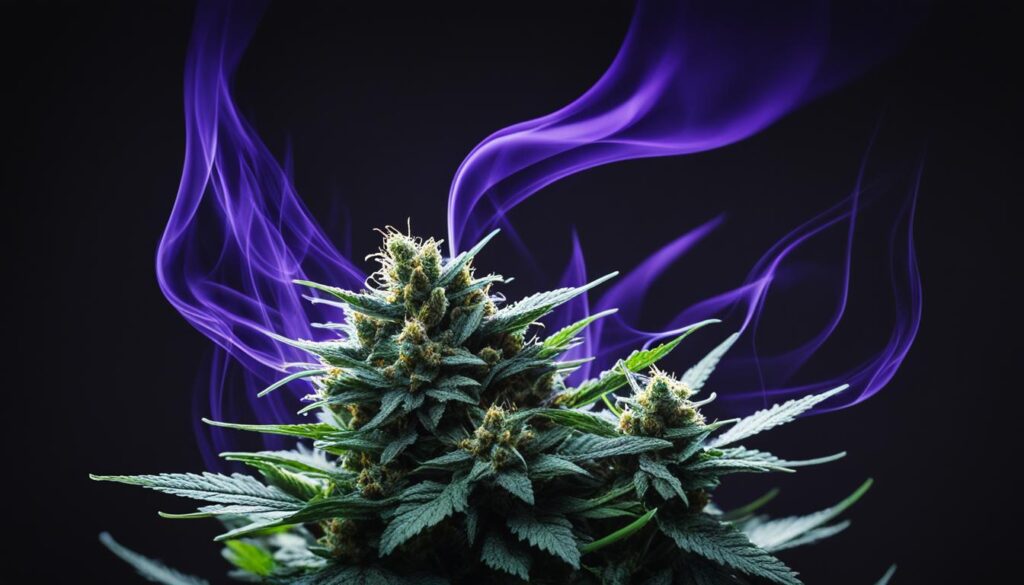
Comparing CBD and THC Affects on Sleep Patterns
Delving into the multifaceted world of cannabinoids, one must understand how two primary compounds, CBD and THC, interact with the body's internal rhythms, particularly affecting one's sleep-wake cycle. While both cannabinoids are integral to the conversation about rest, their roles in sleep patterns differ, sparking inquiries into their individual and combined effects.
Can CBD Induce Sleepiness Like THC?
Within the realm of cannabis research, THC is renowned for its sedative qualities, often utilized by individuals seeking aid in their quest for restful slumber. However, the effect of CBD on sleep is not as straightforward. The question, “does CBD make you sleepy,” is met with divergent experiences. Although CBD does not inherently induce sleepiness, its capacity to mitigate anxiety and soothe the nervous system may foster a more conducive environment for rest, which can indirectly support the onset of sleep.
Delving Into the Sleep-Wake Cycle Influenced by Cannabinoids
The delicate balance of the sleep-wake cycle is a complex interplay of internal biological rhythms. Both CBD and THC engage with the body's endocannabinoid system, a vast network implicated in regulating multiple functions, including the cycles of rest and alertness. By potentially stabilizing these cycles, cannabinoids like THC and CBD may enhance overall sleep quality. This interaction underscores the importance of understanding how different cannabinoids can orchestrate a harmonious symphony within our physiological processes—sometimes sedating, at other times balancing.
To visualize the comparative roles of CBD and THC in influencing sleep, the following table breaks down their distinctive contributions to the sleep-wake cycle:
| Cannabinoid | Typical Effects | Interaction with Sleep-Wake Cycle | Notable for Sleep Impact? |
|---|---|---|---|
| THC | Sedative at higher doses | Can induce sleepiness, modulate REM sleep | Yes |
| CBD | Anxiolytic, no inherent sedative effect | May aid sleep by reducing anxiety, supporting sleep-wake balance | Indirectly |
Exploring the influence of these cannabinoids paves the way for personalizing the use of cannabis-based products to align with individual sleep preferences and needs. Beyond the isolated effects of CBD and THC, their partnership within the endocannabinoid system could point to new horizons in the pursuit of restorative sleep patterns for individuals around the globe.
The Entourage Effect: How Combined Cannabinoids and Terpenes Work
In the intricate dance of cannabis compounds, there lies a phenomenon known as the entourage effect, a synergistic interplay where the whole is greater than the sum of its parts. When cannabinoids and terpenes interact, they may produce effects that single compounds cannot achieve alone. This interaction is central to understanding the true therapeutic potential of cannabis and how it can be utilized for enhanced sleep and relaxation.
Consider the way different instruments come together in an orchestra to create a harmony; similarly, the combination of cannabinoids and terpenes creates a unique ensemble that resonates throughout our physiology. This resonance is believed to lead to improved therapeutic outcomes, unlocking new possibilities in herbal medicine.
The entourage effect suggests that the presence of multiple cannabinoids and terpenes in unison not only contributes to potency but also modifies the overall effect of the cannabis experience. For example, while THC alone may provide certain benefits, its effects can be modified by terpenes such as myrcene, which is known for its sedative qualities. This interaction can potentiate the relaxing and sleep-inducing properties of cannabis.
Moreover, cannabinoids like CBD and CBN, often found in indica strains, are potent in their own rights but when combined with terpenes, they can offer an even more profound effect. Below is a table that encapsulates the typical interaction of cannabinoids and terpenes found within indica strains, which are commonly associated with sedation and sleep aid:
| Cannabinoid | Terpene | Sleep-Inducing Potential when Combined |
|---|---|---|
| THC | Myrcene | High |
| CBD | Linalool | Moderate to High |
| CBN | Terpinolene | Moderate |
By harnessing the combined power of these compounds, cultivators and consumers can tailor their use of cannabis to target specific needs, such as better sleep. The awareness and understanding of the entourage effect are vital in selecting the appropriate strain and form of cannabis to achieve the desired outcome.
Cannabis does more than simply offer THC; it provides a spectrum of cannabinoids and terpenes that collectively contribute to its effect. This holistic approach to cannabis use can lead to better sleep, less anxiety, and a more pronounced sense of relaxation.
Whether seeking the subtle nudge toward dreamland or the profound capitulation into night's depths, the thoughtful orchestration of cannabinoids and terpenes interaction through the entourage effect holds the key to unlocking cannabis's full potential.
Personalizing Cannabis Use: Your Unique Endocannabinoid System
The unique endocannabinoid system (ECS) each person possesses is a complex network of receptors, enzymes, and biochemical pathways involved in maintaining the body's homeostasis. Just like fingerprints, individual ECS setups are influenced by genetics, making your response to cannabis as personal as your DNA. Understanding the intimate relationship between your genetics and cannabis experience is crucial for customizing intake for desired effects. Recognizing these variables can lead to more educated choices that align closely with your therapeutic objectives and enhance your cannabis experience.
How Genetics Influence Cannabis Experience
Research has illustrated that subtle genetic variations can significantly impact how one's unique endocannabinoid system interprets and responds to cannabinoids. These genetic markers can determine the density of cannabinoid receptors in the body, how quickly cannabinoids are metabolized, and even how our systems adapt to long-term cannabis use.
A deeper understanding of your unique genetics can inform which cannabis strains could elicit specific effects. Engaging with a healthcare professional or utilizing DNA insights can offer a personalized guide through the vast selection of cannabis options, optimizing your personal experience.
Customizing Your Cannabis Intake for Desired Effects
Since everyone's endocannabinoid system is a bespoke entity, the journey of achieving the desired cannabis experience is highly personalized. Here lies the importance of acquainting oneself with the various strains, cannabinoid profiles, and terpenes. Tailoring the ratio of THC to CBD, along with other cannabinoids such as CBN or CBG, is the first step in customization. Add to that the varying influences of terpenes, and the combinations become almost endless.
One may start with low dosages and adjust upwards while noting the effects in a journal, fostering an informed approach to consumption. Certain online platforms and mobile applications can also aid in tracking the genetics and cannabis experience correlations, offering a more curated exploration of effects. This methodical, personalized strategy ensures well-being and happiness remain paramount in your cannabis journey.
Remember, it's not one-size-fits-all. Your journey with cannabis is unique, and it should be. Embrace learning about your unique endocannabinoid system and the fascinating way it interacts with cannabis, and you'll unlock a more enjoyable experience.
The Myth of Indica Versus Sativa: Rethinking Cannabis Labels
The enduring paradigm of indica versus sativa has long served as a cornerstone for traditional strain classifications within the cannabis community. Historically, these classifications have provided a rudimentary map guiding expectations of a strain's effects. However, the veracity of these labels is increasingly scrutinized as recent cannabis strain research suggests a more complex reality beyond the binary.
Why Effects May Vary Across Traditional Strain Classifications
The sedative effects traditionally attributed to indica strains and the energizing nature ascribed to sativas paint a picture of predictability in cannabis experiences. Yet, consumers and researchers alike have encountered a kaleidoscope of effects that defy these simple categorizations. It is the intricate tapestry of terpenes and cannabinoids, rather than the broad stroke labels of indica or sativa, that weaves the ultimate experience.
The classic understanding of cannabis effects based on indica versus sativa labels is now giving way to a nuanced recognition of individual chemical profiles. This evolution underscores the indica versus sativa myth, where one's expected sensations from a particular strain might not align with the traditional indicators of its classification.
Emerging Research on Cannabis Strain Effects
As the body of cannabis strain research continues to grow, so does our comprehension of how these complex botanical entities interact with the human endocannabinoid system. Each strain's unique constellation of cannabinoids and terpenes plays an instrumental role in crafting its influence on the user, shattering the confines of the conventional indica and sativa categories.
Research is progressively advocating for a paradigm shift from traditional strain classifications. A deeper understanding of the plant's diverse chemical landscape presents an emerging picture—one that advocates for labels based on specific cannabinoid and terpene profiles rather than the oversimplified indica-sativa dichotomy.
Below is a comparative table that encapsulates the nuanced cannabinoid and terpene profiles of different cannabis strains, elucidating their unique effects:
| Strain Name | Traditional Classification | Dominant Cannabinoids | Dominant Terpenes | Reported Effects |
|---|---|---|---|---|
| Girl Scout Cookies | Hybrid (Indica-dominant) | THC, CBD | Caryophyllene, Limonene | Relaxing, euphoric, pain relief |
| Sour Diesel | Sativa | THC | Myrcene, Limonene | Energy-boosting, cerebral, stress relief |
| ACDC | Hybrid (Sativa-dominant) | CBD, THC | Pinene, Myrcene | Relaxation without intoxication, anxiety relief |
| Ogre | Indica | THC | Myrcene, Caryophyllene | Sleep-inducing, deep relaxation |
| Jack Herer | Sativa | THC | Terpinolene, Pinene | Energizing, creative stimulation |
This refined perspective advocates for a more individual-centric approach, where consumers can seek out strains that harmonize with their personal chemistry and desired outcomes. Embracing this innovative approach demystifies the indica versus sativa myth and celebrates the intricate diversity of cannabis.
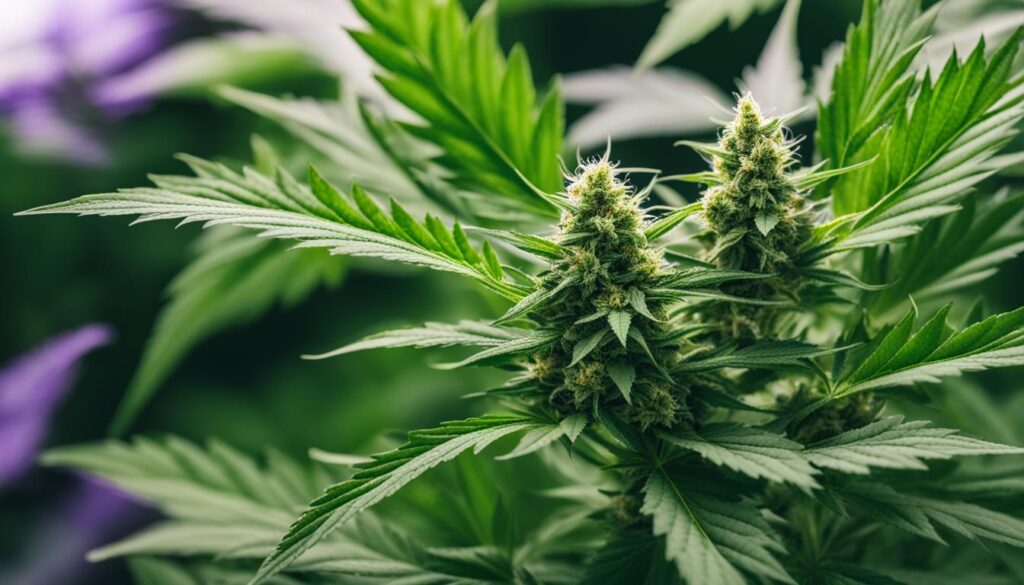
Does Sativa Also Make You Sleepy?
When it comes to sativa strains, the common narrative hints at their invigorating qualities, often highlighted by bursts of creativity and alertness. Yet, as we venture into the nuances of cannabis effects, it's not unusual for some users to find themselves swayed by the relaxing effects of sativa. Could these strains, typically known for their energizing essence, actually hold the secret to a tranquil interlude?
Dissecting the Potential Relaxing Effects of Sativa Strains
The spectrum of reactions to sativa varies significantly from person to person, influenced by the intricate workings of the individual's endocannabinoid system. It's not a curiosity that defies explanation — rather, it's the signature of sativa strains' complex profiles, where cannabinoids such as THC and CBD interact in unexpected symphonies. At certain junctures, these interactions may foster a sense of deep relaxation that dovetails into sleepiness, a response that shatters sativa's stereotypical image.
Understanding the Role of Terpenes in Sativa Varieties
In the world of cannabis, terpenes serve as the maestros of aroma and therapeutic influence. While the terpene role in sativa may bolster its reputation for vigilance and verve, these organic compounds can also play a pivotal role in delivering soothing calm. Myrcene, a terpene typically associated with the tranquility of indica strains, is also present in certain sativa varieties, blurring the line between the expected and the experienced.
However, it's not solely myrcene that shapes this narrative. Other terpenes such as limonene and pinene, often found in the chemistry of sativa, have been identified for their mood-lifting properties. This aromatic ensemble, navigating beyond mere fragrance, orchestrates a user's journey through various manifestations of relaxation and may very well tip the balance toward unexpected sleepiness.
The interplay between these terpenes and the cannabinoids they accompany underscores a phenomenon where deliberating on sativa strains is less about predetermined outcomes and more about exploring individualized responses. So do sativa strains have the potential to beckon the sandman? Quite possibly, but this restful possibility relies on a greater understanding of each strain's unique chemical dance.
| Terpene | Common in Sativa Strains | Potential Effects on Sleep |
|---|---|---|
| Myrcene | Varies | Possible sedation or relaxation |
| Limonene | Yes | Mood elevation that could indirectly influence sleep patterns |
| Pinene | Yes | Alertness; however, in combination with other terpenes, could contribute to relaxation |
In pursuit of a deeper understanding of sativa's impact on sleep, we embrace the diversity it offers — a reminder that even the most steadfast of beliefs about cannabis effects are open to delightful surprises.
Identifying Quality Sleep-Aid Indica Products
With a myriad of indica products in the market promising restful sleep, discerning the elite from the extensive array poses a unique challenge. For the consumer intent on securing the elusive embrace of quality sleep, there's a compass to navigate this sea of options: lab testing and product transparency. Quality sleep-aid indica products stand out not only for their efficacy but also for their commitment to purity and potency.
Ensuring Purity and Potency in Indica Sleep Products
Finding a trusty sleep companion in indica products requires understanding the symbiotic dance between cannabinoids and terpenes. The harmony these compounds achieve sets the stage for how effectively a product invites rest. Yet, it's the assurance of their unadulterated presence, confirmed through reputable lab testing, that truly defines the quality of any sleep-aid indica product.
The Importance of Lab Testing and Product Transparency
Lab testing is the beacon that guides users toward products of integrity. It's a testament to the dedication of brands in delivering safe, consistent, and potent sleep aids. Transparency, in turn, is the clarity with which these results are shared—illuminating the journey from the cultivation of the strain to its final formulation. Together, lab testing and product transparency construct the bedrock of trust in sleep-aid indica products.
Decoding the language of lab reports is key to comprehending the complexity and concentration of active ingredients within a product. Concentrations of CBN, known for its soporific effects, and the presence of terpenes like myrcene and linalool are pivotal indicators of the products' sleep-inducing potential. The table below synthesizes crucial details that consumers can expect from lab tests of top-tier quality sleep-aid indica products:
| Component Tested | Desired Feature for Sleep-Aid | Transparency Indicator |
|---|---|---|
| CBN Content | High CBN Levels | Percentage Quantified |
| Myrcene Levels | Significant Presence | Terpene Profile Detailed |
| Purity Verification | No Pesticides/Contaminants | Passed Safety Screenings |
As consumers arm themselves with knowledge and insist on unwavering standards of lab testing and product transparency, they advocate for a market that honors the quest for quality sleep. Such steadfast attention not only improves individual experiences but elevates the industry as a whole.
Alternative Therapeutic Uses of Indica Strains
The rich tapestry of indica's benefits weaves far beyond the bedroom, casting a wider net of therapeutic uses that serve a multitude of wellness needs. From managing stress with indica to enhancing holistic wellness, these strains possess a breadth of applications that merit exploration.
Indica’s Role in Managing Stress and Anxiety
The fast-paced nature of modern life often leaves individuals seeking refuge from the onslaught of stress and anxiety. Here, the calming properties of indica strains might just be the anchor in stormy seas. As potential natural stress relievers, they offer a serene escape, bringing forth tranquility and a state of mind conducive to relaxation and inner peace.
The therapeutic uses of indica for anxiety and stress manifest in both body and spirit, allowing a gentle descent into a more centered existence. Below is a table that elucidates this balancing act:
| Indica Strain | Known Properties | Suggested Use for Stress |
|---|---|---|
| Granddaddy Purple | Calming Effect, Myrcene Rich | Evening stress relief, mind easement |
| Blueberry Kush | Relaxing, Sleepy Feeling | Deep relaxation, post-work decompression |
| White Rhino | Body-Mind Synchronization | Momentary disconnection, meditation adjunct |
Indica for Holistic Wellness: Beyond Sleep
Moving past the threshold of sleep support, indica strains invite a collage of holistic wellness benefits. Engaged as an herbal ally, indica bears the potential to soothe the corporeal form, providing relief from exercise-induced discomfort and engendering an overall wellbeing that transcends the temporality of sleep. The embracing calm that characterizes indica may also serve as a foundation for a mindfulness practice, enhancing meditative states and nurturing the soul.
Moreover, the usage of indica in a holistic context encourages an all-encompassing approach to wellness, tapping into the plant's natural bounty to foster balance. Below, we chart a trajectory of how indica could be incorporated into a more integrative wellness routine:
- Daily End-of-Day Relaxation: Using indica to unwind and reflect, fostering mental clarity.
- Post-Exercise Recovery: Leaning on indica's anti-inflammatory properties for muscle recovery.
- Mindfulness and Meditation Enhancement: Supplementing practices with indica's calming essence.
As our appreciation for indica's diverse therapeutic uses continues to deepen, it remains clear that these strains stand not just as sentinels of sleep but as pillars of a more profound and integrative approach to wellness. In this light, the cultivation of both mind and body using the restorative touch of indica becomes a powerful testament to its holistic wellness potential.
Conclusion
In the quest to demystify the night's embrace, we have traversed the landscapes of indica strains and their intimate dance with sleep. Summarizing the effects of indica on sleepiness, we find rich evidence that points to the symbiotic relationship between a strain's unique terpene and cannabinoid composition and its potential to lull the consumer into a deep state of rest. However, the individuality of one's endocannabinoid system suggests that reactions to indica may vary, prompting a more nuanced approach to its use in the realm of sleep aid.
Summarizing the Effects of Indica on Sleepiness
The soporific reputation of indica, accentuated by terpenes like myrcene and cannabinoids like THC and CBN, has continued to hold sway in cannabis circles. The sedative qualities ascribed to their intrinsic profiles have supported many in their pursuit of rest. Yet, it is the individual's biochemistry that ultimately orchestrates the effects, underscoring the importance of personal experience in summarizing indica effects on sleep.
Future Directions in Research on Indica Strains and Sleep
Looking forward, the confluence of anecdotal success and scientific inquiry heralds an era of deepened understanding, with research on indica and sleep poised to illuminate the complexities of this interrelationship. Advances in cannabinoid science and more granular strain profiling promise to refine our grasp of how to harness indica for wellness. Continually evolving knowledge will inevitably shape how we perceive, choose, and utilize these strains to support our most restful nights.
FAQ
Does indica make you sleepy?
Yes, indica strains are known for their sedative properties, which can make you sleepy. The presence of terpenes like myrcene and cannabinoids such as THC and CBN contribute to the sleep-inducing effects of these strains.
What are the benefits of using indica for sleep?
Indica strains can help promote relaxation, ease temporary exercise-induced pain, and contribute to a more restful sleep. They are also beneficial for their calming effects that may aid individuals dealing with stress or anxiety.
How do indica strains differ from sativa in effects?
Indica strains are typically associated with a relaxing body high that leads to increased sedation and sometimes, the couch-lock phenomenon. Sativa strains, on the other hand, often produce a more energizing and uplifting effect.
What role do terpenes play in indica’s relaxing properties?
Terpenes such as myrcene, linalool, and terpinolene contribute significantly to the sedative properties of indica strains. They can induce relaxation, reduce stress, and assist in creating a sleep-conducive environment.
Why does myrcene contribute to sleepiness?
Myrcene is a terpene commonly found in indica strains that has a sedative effect which can aid in inducing sleep. It also interacts with THC to potentially enhance its sedative properties, making it effective for those seeking a natural sleep aid.
Can indica strains help with insomnia?
Indica strains can be effective for people with insomnia, potentially helping to increase sleep quality and reduce the amount of time it takes to fall asleep. However, the impact may vary depending on individual body chemistry and the specific strain's cannabinoid and terpene profile.
What causes the sleepy feeling from indica?
The sleepy feeling from indica can be attributed to its terpenes and cannabinoids, especially when high levels of myrcene and CBN are present alongside THC, which tend to produce profound sedative effects.
What terpenes are commonly found in sedative indica strains?
Myrcene, linalool, and terpinolene are some of the most common terpenes found in sedative indica strains. Each of these terpenes has unique properties that contribute to the overall calming and sleep-inducing effects of the strain.
How does CBN elevate indica’s sleep-inducing qualities?
CBN (Cannabinol) is a cannabinoid with strong sedative properties that is often more prominent in aged cannabis. It can enhance the sleep-inducing qualities of indica strains without a significant psychoactive effect, making it a good candidate for those seeking sleep aid.
What is THC’s role in sedation?
THC can act as a sedative, particularly at higher doses. Its effect on the central nervous system can lead to feelings of relaxation and drowsiness, which may support better sleep.
Are there specific indica strains recommended for better sleep?
Yes, strains such as Northern Lights, Zkittlez, The Remedy, Sweet & Sour Widow, and Granddaddy Purp are often recommended for their potential sleep benefits. These strains are known for their specific terpene and cannabinoid profiles that contribute to their efficacy as sleep aids.
How do indica strains alleviate exercise-induced pain and discomfort?
Indica strains are known for their analgesic and anti-inflammatory properties, which can help alleviate muscle pain and discomfort following exercise. This can contribute to a more comfortable and restful sleep.
Can vaping indica strains help enhance sleep?
Yes, vaping indica strains like Northern Lights and Zkittlez can help enhance sleep. Through vaping, the terpenes and cannabinoids are quickly absorbed, providing faster onset of the relaxing and sleep-inducing effects.
How do CBD and THC affect sleep patterns?
THC is associated with sedation, particularly in higher amounts, while CBD is reported to help with sleep by reducing anxiety and promoting calmness, though not inherently inducing sleepiness. Both interact with the endocannabinoid system to potentially influence and balance the sleep-wake cycle.
What is the entourage effect regarding sleep?
The entourage effect is the synergistic interaction between cannabinoids and terpenes in cannabis. This combined effect is thought to enhance the therapeutic properties of individual compounds, potentially leading to improved relaxation and sleep quality.
Why may effects vary across traditional strain classifications?
Effects can vary due to the complex terpene and cannabinoid profiles within each strain, which are not strictly defined by traditional classifications like indica or sativa. Personal endocannabinoid system differences also play a role in individual responses to these strains.
Can sativa strains also make you sleepy?
While less common, some people may feel sleepy after consuming certain sativa strains. Individual chemistry, the presence of sedative terpenes like myrcene, and variations in THC and CBD levels can all contribute to these atypical effects.
How can you identify quality sleep-aid indica products?
Quality sleep-aid indica products can be identified by ensuring they have undergone rigorous lab testing, which confirms their purity, potency, and cleanliness. Transparency about cannabinoid and terpene profiles by the manufacturer is also crucial.
What are other therapeutic uses of indica strains?
Beyond aiding sleep, indica strains are also useful for managing stress, anxiety, and providing a general sense of calm. They may also help in reducing temporary pain and discomfort due to their anti-inflammatory and analgesic properties.
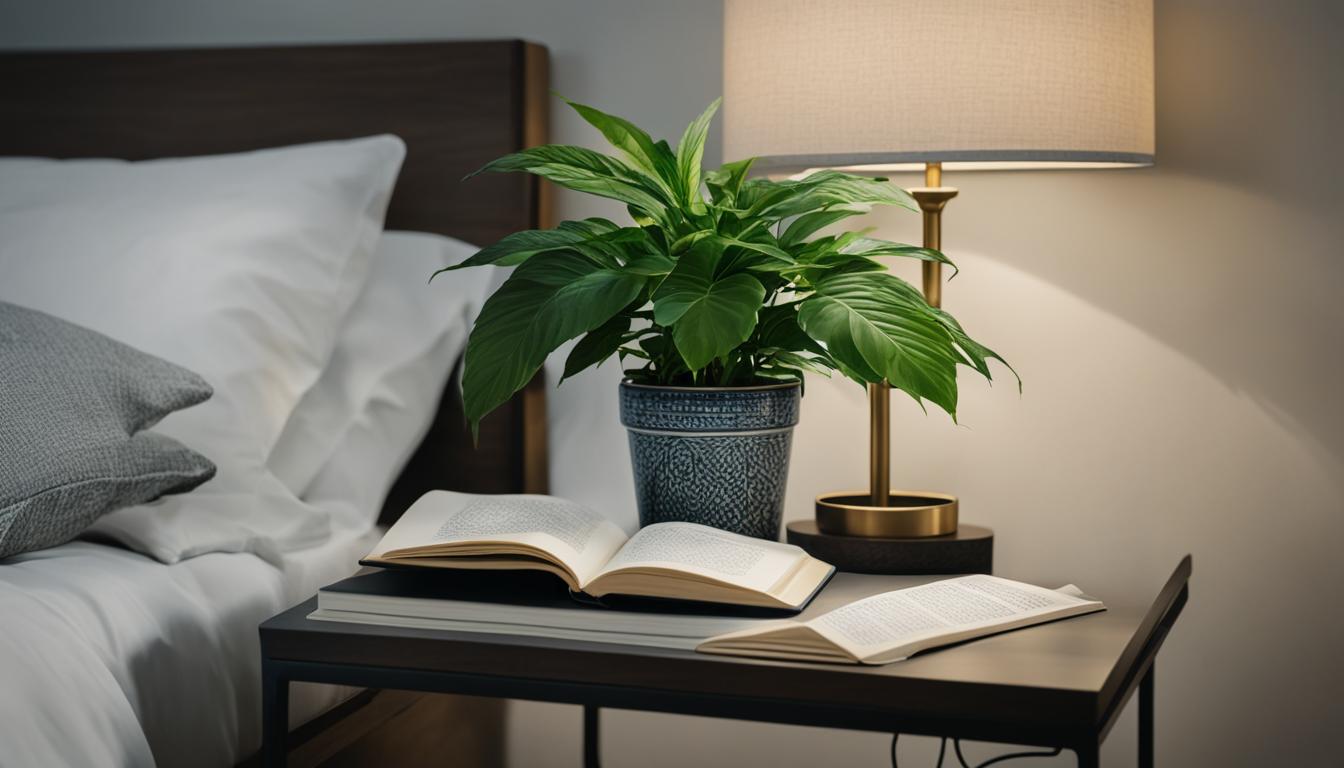
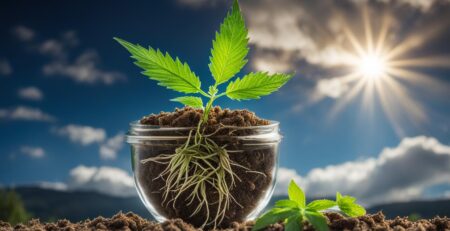


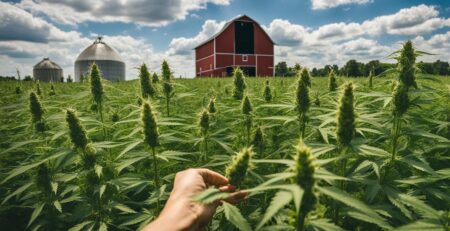
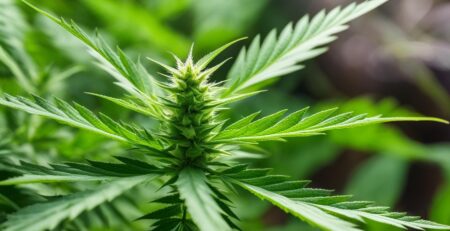


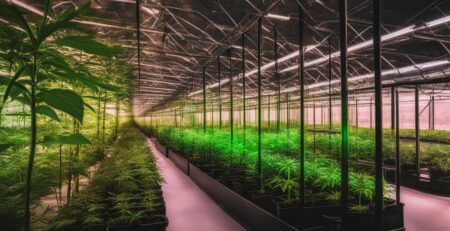


Leave a Reply